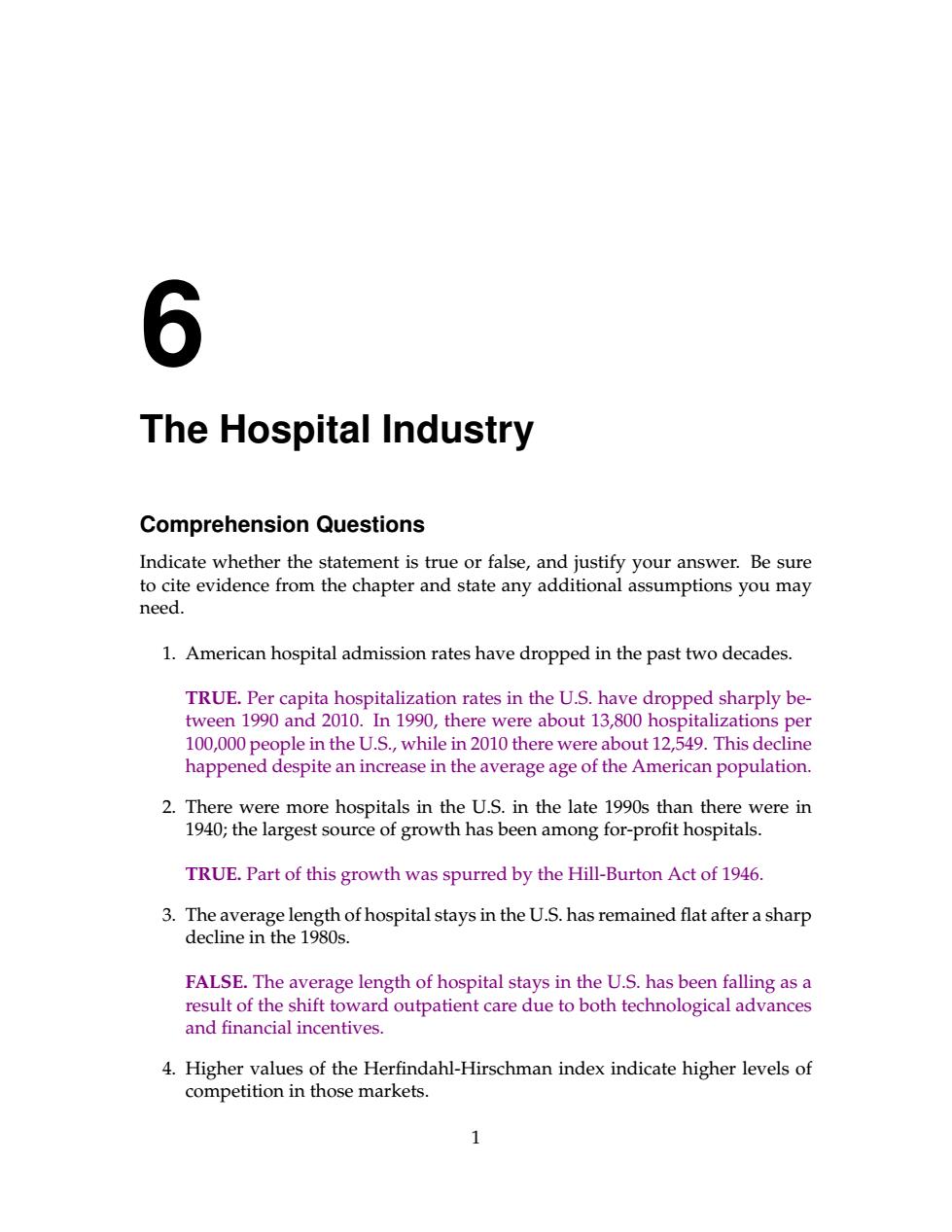正在加载图片...

The Hospital Industry Comprehension Questions Indicate whether the statement is true or false,and justify your answer.Be sure to cite evidence from the chapter and state any additional assumptions you may need. 1.American hospital admission rates have dropped in the past two decades. TRUE.Per capita hospitalization rates in the U.S.have dropped sharply be- tween 1990 and 2010.In 1990,there were about 13,800 hospitalizations per 100,000 people in the U.S.,while in 2010 there were about 12,549.This decline happene espitean increase in the average age of the American population. 2.There were more hospitals in the U.S.in the late 1990s than there were in 1940:the largest source of growth has been among for-profit hospitals. TRUE.Part of this growth was spurred by the Hill-Burton Act of 1946 3.The average length of hospital stays in the U.S.has remained flat after a sharp decline in the 1980s. FALSE.The average length of hospital stays in the U.S.has been falling as a result of the shift toward outpatient care due to both technological advances and financial incentives 4.Higher values of the Herfindahl-Hirschman index indicate higher levels of competition in those markets6 The Hospital Industry Comprehension Questions Indicate whether the statement is true or false, and justify your answer. Be sure to cite evidence from the chapter and state any additional assumptions you may need. 1. American hospital admission rates have dropped in the past two decades. TRUE. Per capita hospitalization rates in the U.S. have dropped sharply between 1990 and 2010. In 1990, there were about 13,800 hospitalizations per 100,000 people in the U.S., while in 2010 there were about 12,549. This decline happened despite an increase in the average age of the American population. 2. There were more hospitals in the U.S. in the late 1990s than there were in 1940; the largest source of growth has been among for-profit hospitals. TRUE. Part of this growth was spurred by the Hill-Burton Act of 1946. 3. The average length of hospital stays in the U.S. has remained flat after a sharp decline in the 1980s. FALSE. The average length of hospital stays in the U.S. has been falling as a result of the shift toward outpatient care due to both technological advances and financial incentives. 4. Higher values of the Herfindahl-Hirschman index indicate higher levels of competition in those markets. 1